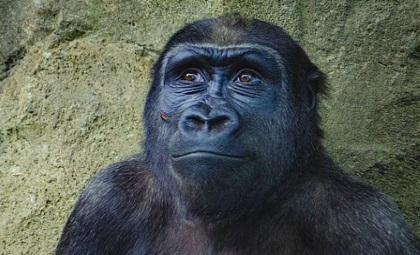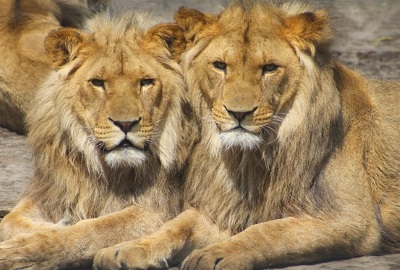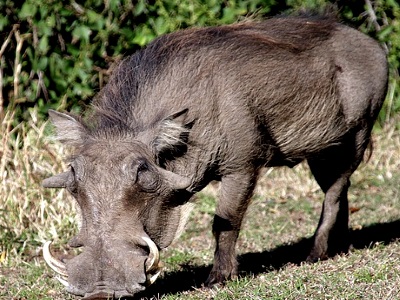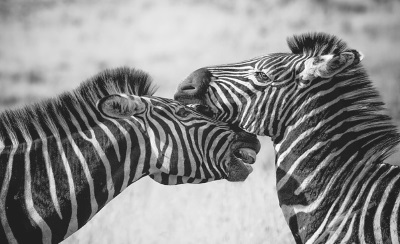Valencia Zoo is one of the most beautiful, modern and attractive zoos in Europe. The “Bioparc Valencia” (official name) is almost in the centre of the city of Valencia. Almost only animals from Africa live in the zoo. The Biopark is divided into 4 parts: Savannah, tropical forest, wetlands and Madagascar.
The modern zoo of Valencia gets very good reviews almost everywhere. Visitors get very close to the animals. There are few fences, often only a moat, rocks, a natural stream or a glass pane between the animals and people. Much importance has been attached to the natural environment of the animals. In warm Spain, animals from Africa can of course live much more outdoors in a zoo than for example in Germany. In some enclosures, like smaller monkeys (lemurs) from Africa, the zoo visitors can even go inside.
>>>>> On this page you can buy tickets for the zoo

The modern Bioparc Valencia was opened in 2008 and is about 10 hectares in size. You can see about 250 animal species, almost all from Africa. Highlights are, as in many zoos, the African classics such as elephants, lions, big monkeys and so on. But also the many other animal species are very interesting. We especially liked the fact that the surroundings in the zoo and the vegetation were adapted to the African home of the animals. In our opinion, the Bioparc Valencia is one of the best zoos in Europe.
Parking in Valencia: If you are traveling with your own car or rental car, you should definitely reserve a parking space in Valencia online in advance: Click here
Entrance fees Bioparc Valencia 2025
Big sightseeings in Spain are often not exactly a bargain. If you buy your tickets on the Internet on the German website Getyourguide.de, the following prices apply (as of 2025): Adults 28,90 Euro Children under 4 years free entrance Children 4-12 years: 22,60 Euro Seniors (retired peopel): about 23 Euro. These prices apply to admission tickets on the Internet. Buying tickets online is quite easy, you have to print them out afterwards. You can cancel up to 24 tickets free of charge.
>>>> More information and purchase of tickets for Bioparc Valencia
These prices apply to tickets on the Internet. At Tiqets.com you can cancel free of charge up to 24 hours in advance. At the zoo checkout you pay about the same prices. However, the queues are often extremely long.
Important: We do not recommend entering the Valencia Zoo without a ticket. The lines at the Bioparc ticket office are often very long. We even waited for almost an hour in November, the absolute off-season. During peak season, the line is often several times longer. There is a separate entrance for visitors with online tickets. There is no line there.
>>>>> On this page you can buy tickets for the zoo Bioparc Valencia

Opening hours Bioparc Valencia 2025
As far as we know the opening hours are usually from 10 am to 8 pm. In winter, the opening hours of Valencia Zoo are somewhat shorter due to the early darkness (e.g. 10 am to 6 pm). There is no rest day or similar to our knowledge,
Directions to Valencia Zoo (Biopark) 2025
Metro: The nearest underground station is a good 10 minutes walk away and is called Nou d’Octubre (lines 3 and 5). Parking: The parking spaces at the Valencia Zoo cost 5 euros (up to 10 hours). On foot: From the city centre (old town, cathedral) you walk about half an hour to the entrance of the zoo. By bus: Several bus lines stop near the Biopark, for example lines 3, 67, 81 and 95. Several lines directly from the “Gare du Nord” train station to the zoo.
Gastronomy Zoo Valencia: There are several restaurants, cafes, etc. There are vending machines everywhere, especially with water bottles. The prices are not too high. You can only take water into the Bioparc in plastic bottles. So no other drinks or glass bottles. But we weren’t really checked.

The Bioparc on the city map of Valencia
Concept Zoo Valencia
The Bioparc Valencia differs from normal zoos especially in one point. Also the landscape, the plants and so on were adapted to the natural environment of the animals in Africa. This should give the visitors of the zoo the feeling to see the real home of the animals. Also often different animal species are held together. This is also the case in the wild.
>>>>> On this page you can buy tickets for the zoo
In our opinion, this concept has worked well and makes a visit to the Biopark on holiday in Spain an extraordinary experience for adults and children.
Classification Bioparc Valencia
The zoo park in Valencia is divided in the yer 2023 into 4 parts: Savannah, wetlands, rainforest at the equator and Madagascar. The savannah region is often very popular with children. Here are most of the big animals like giraffes, lions and elephants. The zoo section Madagascar receives much praise. The large island off East Africa has its own fauna. Many of the animals are new to the visitors and therefore particularly interesting.
Animals at Valencia Zoo
The theme of the zoo is Africa. So almost all of the approximately 250 different animals are from Africa. In the following some examples. Region Forest on the equator (tropical rainforest): monkeys (chimpanzees and gorillas), buffalo, leopard, snakes (various species), turtles, hippo Madagascar: lemurs (monkeys), flamingos, various birds and mammals Wetlands: Egyptian crocodile, pelicans, fish, water birds, frogs (also poisonous frogs) Savannah: elephant, giraffe, hyena, lion, zebra, warthog, rhinoceros, porcupine, antelope, meerkat, ostrich, giraffe, lion

Rules and Gastronomy Zoo Valencia
I’m afraid mine can’t take any food or drink. As far as we know, at least bottled water is tolerated. In the Bioparc there are several restaurants, cafes and the like. But the prices are rather high. Who wants to save or has to, should eat sufficiently before the zoo visit. Other rules in the Biopark are less surprising: Smoking is only allowed in designated zones. Bicycles, inline skates etc. are not allowed. Also dogs are not allowed, as well as leaving the paths and some more. Of course you are not allowed to photograph animals with lightning or feed them. (Only an excerpt, there are even more regulations).
>>>>> On this page you can buy tickets for the zoo
Amazing animals at Valencia Zoo
African elephant:
The African elephant is the largest land animal and can be seen in the ‘African Savannah’ exhibition at Valencia Zoo.
Bengal tiger:
The Bengal tiger is a majestic endangered species that can be seen in the zoo’s tiger exhibit.
Chimpanzee:
Chimpanzees are highly intelligent and social primates that can be observed in primate facilities.
Big anteater:
Giant anteaters are unique and fascinating animals that can be found in South American exhibits.
snow leopard:
The snow leopard is a rare and critically endangered big cat featured in the Himalayan exhibit.
Western lowland gorilla:
The western lowland gorilla is the largest primate and can be seen in primate enclosures.
Hippo:
Hippos are giant semi-aquatic mammals featured in the African Savannah Exhibit.
Orangutan:
Orangutans are intelligent arboreal primates that can be observed in primate exhibits.
Red Panda:
The red panda is a cute arboreal animal that can be seen in the Himalayan exhibition.
Komodo Dragon:
The Komodo dragon is the largest living lizard and can be seen in reptile exhibits.
Icebear:
Polar bears are a majestic and endangered species featured in the Arctic exhibit.
Black Rhino:
The black rhino is an endangered species found in the African savannah exhibit.
Giraffe:
The giraffe is a unique and iconic animal featured in the African Savannah exhibit.
Red Kangaroo:
The red kangaroo is a unique and iconic Australian marsupial that can be observed at the kangaroo exhibit.
Nile Crocodile:
Nile crocodiles are huge and dangerous reptiles found in exhibits on the African savannah.
Koala bear:
Koalas are iconic and cute Australian marsupials that you can see at the Koala exhibit.
Amur leopard:
The Amur leopard is an endangered big cat that features in tiger exhibits.
Cheetah:
Cheetahs are the fastest land animals and can be seen in the African Savannah exhibit.
Idleness:
Sloths are unique slow-moving arboreal animals found in South American exhibits.
African wild dogs:
The African wild dog is a very social and endangered dog on display at the African Savannah Exhibit.
Common Chimpanzees:
Common chimpanzees are highly intelligent and social primates that can be observed in primate exhibits.
Giant otter:
Giant otters are unique and fascinating animals that can be found in South American exhibits.
king cobra:
King cobras are venomous and dangerous snakes that can be found in reptile exhibits.
Ocelot:
Ocelots are small and elusive wild cats found in South American exhibits.
Red-tailed Hawk:
The red-tailed hawk is a common bird of prey found in bird shows.
Snow owl:
The snowy owl is a majestic and iconic bird of prey that you can see at the Wild Birds Exhibition.
Bald Eagle:
The bald eagle is an iconic bird of prey featured in bird shows.
Sirotegibbon:
White-handed gibbons are arboreal primates that can be observed there.
>>>> On this link there are tickets for the Zoo Valencia
Monkeys at Valencia Zoo
Valencia Zoo is home to a variety of monkey species, each with their own unique characteristics and behaviors. Visitors to the zoo can observe these fascinating primates in their natural habitat, learn about their habitats and behavior, and even participate in educational programs that promote conservation and awareness of these important animals. Here are some of the monkeys you can see at Valencia Zoo:
Western Lowland Gorilla: The western lowland gorilla is the largest primate and can be seen in the primate exhibit. These gorillas are very social and live in groups led by a dominant male, the silverback. In the wild, they are known for their intelligence and tool use.
Common Chimpanzee: The Common Chimpanzee is a highly intelligent and social primate that can be observed in the primate exhibit. These chimpanzees are known for their problem-solving skills, tool use, and complex social behaviors.
Orangutan: The orangutan is an intelligent and arboreal primate that can be observed in the primate exhibit. These monkeys are known for their distinctive orange fur and ability to use tools.
White-handed Gibbon: The white-handed gibbon is an arboreal primate that can be seen in the primate exhibit. These little monkeys are known for their loud calls, which they use to communicate with other gibbons.
Japanese Macaque: Also known as the snow monkey, the Japanese macaque is a medium-sized monkey that can be observed in the primate exhibit. Adapted to cold climates, these monkeys are known for their habit of bathing in hot springs.
Mandrill: The mandrill is a colorful and very social primate that can be observed in the primate exhibit. These monkeys are known for their striking blue and red facial markings.
Golden Lion Tamarin: The golden lion tamarin is a small monkey that can be observed in the primate exhibit. Native to Brazil, these primates are critically endangered due to habitat loss.
Red-handed Tamarin: The red-handed tamarin is a small monkey that can be seen in the primate exhibit. Native to South America, these primates are known for their distinctive reddish-orange fur.
Colobus Monkey: The colobus monkey is a black and white primate that can be seen in the primate exhibit. These monkeys are known for their ability to digest tough plant matter and their long, shaggy fur.
Squirrel Monkey: The squirrel monkey is a small, active primate that can be observed in the primate exhibit. These monkeys are known for their agility and distinctive black and white coat.
>>>> On this link there are tickets for the Zoo Valencia
Predators at Valencia Zoo
There is a wide variety of predators at Valencia Zoo, each with their own characteristics and behaviors. Zoo visitors can also view these fascinating animals in their natural habitat, learn about their habitat and behavior, and participate in educational programs that promote conservation and awareness of these important animals. Some of the predators seen at Valencia Zoo are listed below.
African lion :
African lions are large carnivorous mammals that can be seen in the African Savannah exhibit. These lions are very social and live in prides led by dominant males called lions. Known for its distinctive mane and loud roar.
Bengal tiger:
The Bengal tiger is a large and powerful predator that can be seen in the tiger exhibit. Known for their distinctive orange fur with black stripes, these tigers are native to India and Southeast Asia.
Jaguar:
Jaguars are large, carnivorous mammals that can be seen in rainforest exhibits. Known for their distinctive, spotted coat and powerful jaws, they can hunt large prey such as deer and monkeys.
African wild dogs :
African wild dogs are very social and active predators that can be seen at shows on the African savannah. These dogs are known for their distinctive black, white, and tan coat and hunting skills that rely on teamwork and communication.
Grey Wolf:
Gray wolves are very adaptable predators that can be seen in the European forest shows. These wolves are known for their unique howls and social behavior that allow them to prey on larger prey such as elk and bison.
Cheetahs:
Cheetahs are large, fast predators that can be seen at shows on the African savannah. These cats are known for their distinctive spotted coat and their ability to run at 70 mph.
snow leopard:
The snow leopard is a large, elusive predator that can be observed in the Himalayan exhibit. Well adapted to life at high altitudes, these cats are known for their distinctive white coat with black markings.
Spotted Hyena :
Spotted hyenas are highly adaptable and opportunistic predators that can be observed at exhibitions on the African savannah. These hyenas are known for their unique laughter and ability to capture and hunt a variety of prey.
Eurasian lynx:
The Eurasian lynx is a medium-sized predator that can be observed in European forest exhibits. These cats are known for their distinctive bushy ears and ability to hunt a variety of prey including deer and small mammals.